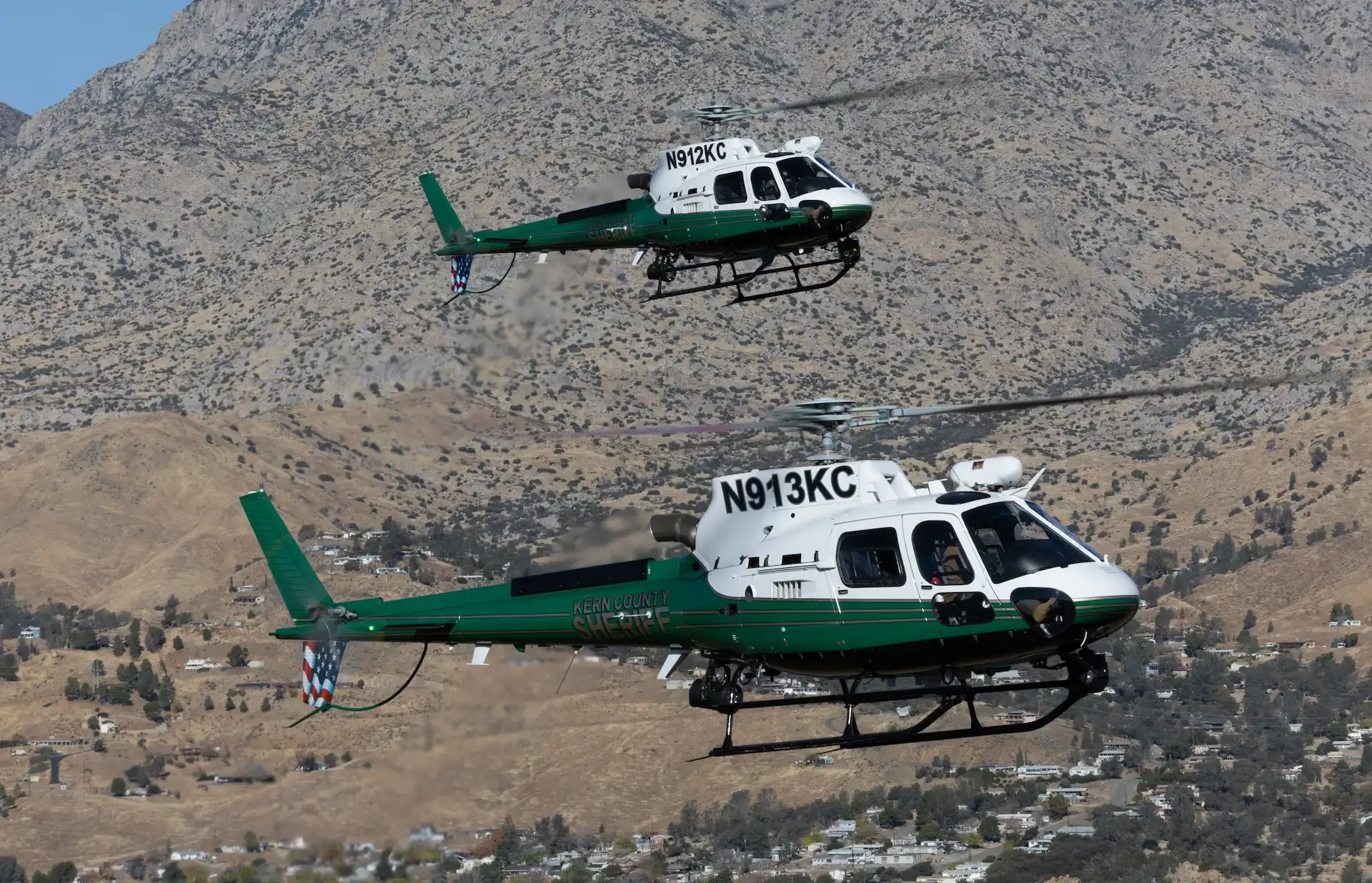From its humble 1972 inception with a single Bell 47, the Kern County Sheriff’s Office Air Support Unit has progressed through decades of MD500 and Bell OH58 operations to now field a pair of new Airbus H125s, the latest acquisitions entering service in the latter quarter of 2023.
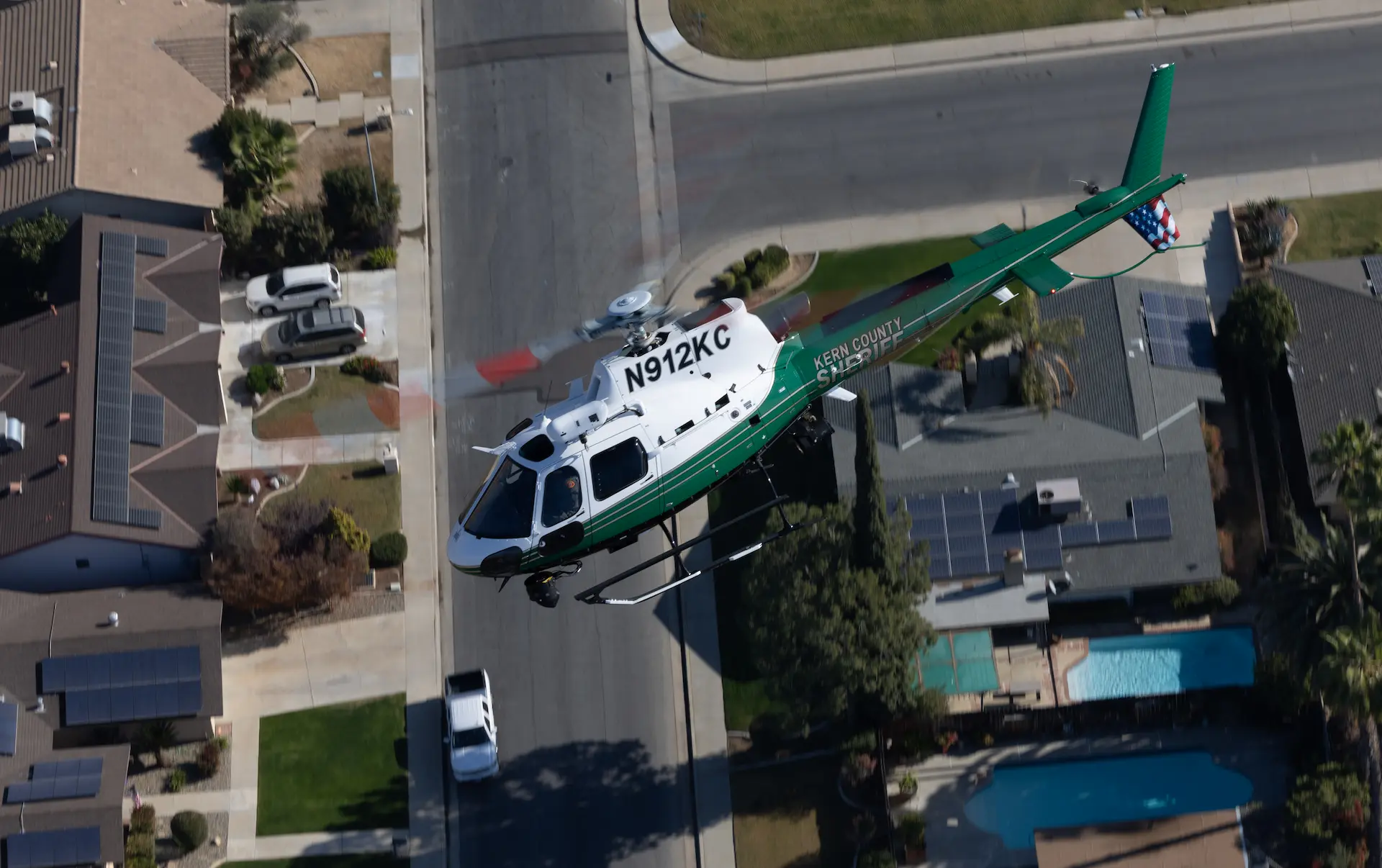
Prior to 1972, the only air support available to the Kern County Sheriff’s Office was provided by civilian volunteers with their own fixed-wing aircraft when available. In 1972 though, the KCSO instituted its own air support unit with the acquisition of a Bell 47. This first helicopter launched the Sheriff’s Office into law enforcement aviation and flew patrol missions until 1975, when it crashed after striking wires inside the mouth of the Kern River Canyon. The little Bell was replaced by a Hughes 500C, which flew until 1978, when the air support unit was deactivated due to a lack of funding. The unit was re-instituted in 1984 with a leased Bell 206B JetRanger and in 1987 the department purchased two new MD500Es. Also added to the unit in 1987 was a seized Cessna T-210N fixed-wing for investigative missions and administrative transport, while a new Cessna T-206H was purchased in 2001 and a Turbo Commander 690A in 2012.
MD500Es served the county well for over 35 years, equipped with SX-16 searchlights and 8500 FLIR systems and in 1997 the rotary-wing fleet was supplemented by a pair of ex-military OH-58s at no cost to the county. The unit commenced NVG operations in 2006, using Anvis-9 NVGs for night helicopter operations and in 2007, the unit’s capability was expanded into the medium-lift and hoisting arenas with the purchase of a Bell Huey II, equipped with a Goodrich hoist. By the 2020s however, the aging MD500s and OH-58’s – although still in excellent condition – were proving to be dated in technology and not capable of satisfactorily fulfilling all the mission requirements of the unit without pushing the edge of the operational envelope.
After considering the offerings on the market for a replacement aircraft type that fitted the unit’s required specifications and capabilities, the Airbus H125 was selected and two new examples were ordered at a total cost of around US$12 million, with both new machines entering service late in 2023. Senior Deputy Tim Caughron related, “It was something that had been talked about for years, but it was when Commander Joel Swanson took over the unit that he got stuck in and did all the legwork to make it the acqusition happen. We were also really lucky that current Sheriff Donny Youngblood had commanded the Air Unit in the past, so he knows the value of what we do. That amount of money was a big ask when the state has not been in a strong financial position for some years.” Fortunately for the unit and to the benefit of the state’s populace, the sheriff was able to sell the aircraft purchase on the basis of the aging fleet struggling to meet the demands of the unit’s mission set and being outdated in terms of safety and technology.
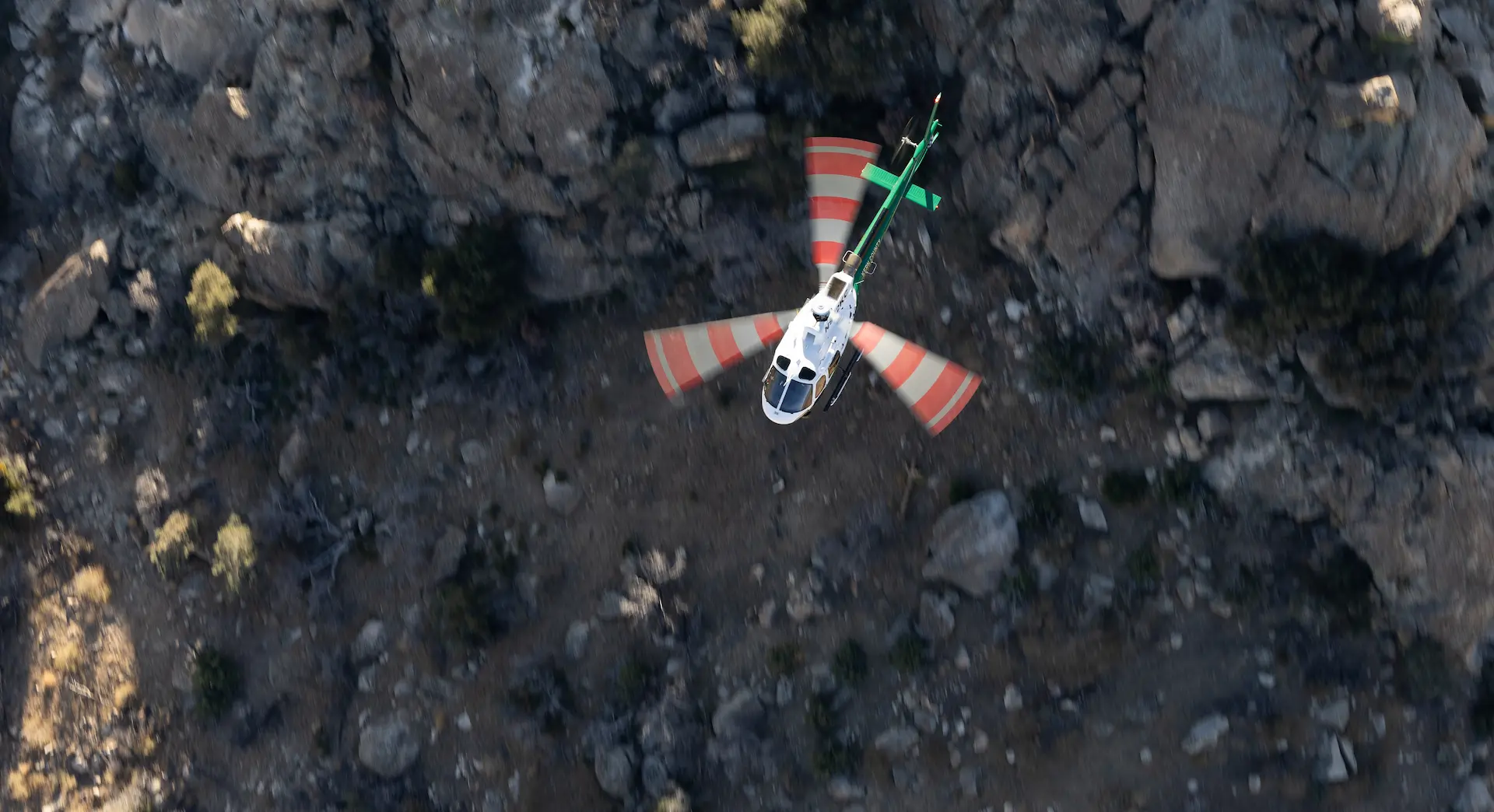
Commander Swanson explained that the push for new aircraft focused primarily on a safety management systems approach, explaining, “We looked at such features as crash attenuating seats, crash-resistant fuel tanks, stuff that was available but we didn’t have because it didn’t exist back in 1986. We considered what could and couldn’t be upgraded on our existing fleet and put presentations together covering every aspect of where we were at and where we should be. Our OH58s were 1976 vintage and comparing the technology in a 1976 patrol car with current patrol vehicles really helped greatly in showing that we were nowhere near where we should be. We were also in a good budget year and basically, the stars all aligned.” He also acknowledged that the shift to Airbus did generate a few un-budgeted costs, such as purchasing a lot of extra tools for the mechanics that carry out the in-house maintenance.
Caughron is a highly experienced senior pilot and the unit’s CFI, with around 21 years of service with the Air Support Unit. He commented, “The biggest advantage of the change is the technological advances from the 1986 500s to the 2022 H125s; it’s so significant that you can’t really compare the two.” One MD500 was sold to Kings County, CA and the other is currently retained as a trainer but still retains its mission equipment so it can be used as a backup – albeit less capable – patrol aircraft if necessary. “We’re keeping it for now but we’re thinking of replacing it if we can get another Airbus,” advised Caughron. Senior Pilot Sergeant Bob Riggs added that a third H125 was highly desirable and he made the point, “We’ve been operating helicopters long enough to know that you need at least two to keep one in the air, and three to keep one or two in the air at any given time.” An extra H125 will increase the unit’s availability as the maintenance schedules can sometimes coincide, taking both H125s out of the air for a day or two.
The significantly lower cost of Bell’s 505 was somewhat of a hurdle in getting the Airbus purchase approved, but Kern’s extremely large coverage area and high altitudes made the H125 the best – if not only – viable option that met all the operational requirements at a relatively affordable cost, compared to twin-engine offerings that could match or better it. County officials were taken on demonstration flights and when they saw first-hand the differences between the types, they were readily convinced of the benefits in spending the extra to go down the H125 route. The Sheriff’s Office budgets sensibly for its aerial operations and bills itself for every flight hour, with the funds going from the unit’s annual operating budget into a separate long-term account to be available when needed for such items as consumables costs, maintenance, overhauls and repairs.
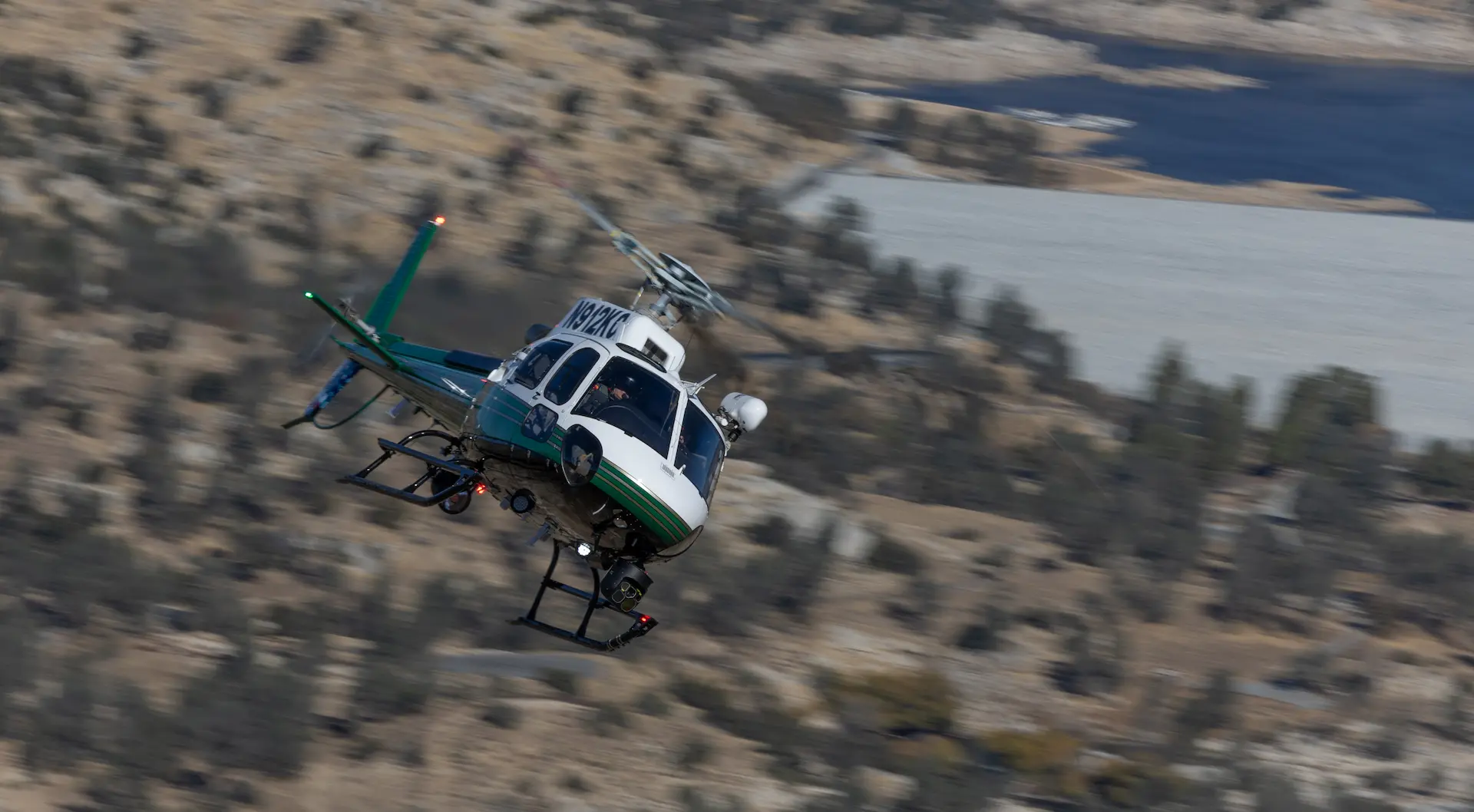
Opinions of the new aircraft are universally positive and Caughron stated, “The H125 is a great law enforcement platform, especially in our county where we have the high altitudes in areas that we fly. We would struggle in the MDs and the 58s doing rescues at the high altitudes.” Bakersfield is at 500ft AMSL and the highest peak in the county is about 9,000ft, but Caughron explained that the unit has been called out of county to higher peaks and has carried out operations at 12 – 13,000ft on Mount Whitney in the Huey II. “The 500s wouldn’t do that but the H125s should have no problem operating up to that altitude,” he commented. Riggs pointed out that the spine of the Sierra Nevada mountains cuts the county in two, so a large proportion of the unit’s flying is either in mountainous terrain or involves crossing the range.
The primary role of the Air Support Unit is to support the law enforcement mission, conducting patrol flights, supporting patrol units, carrying out administrative flights and will also include provision of search and rescue services throughout the Office’s huge area of responsibility, of a little over 8,000 square miles with a population of around one million residents. The H125’s much larger cockpit and greater cabin space allowed the unit to equip the new aircraft with vastly superior mission equipment than that fitted in the old 500s. During the aircraft selection process a number of other operators were visited, giving the unit a good perspective on what was possible and desirable for its mission requirements. One operator referred them to Hangar 1 for fit-out and modifications and that company was eventually selected to fit out the two new birds. Swanson described Hangar 1’s work as flawless and said that the aircraft are exactly what was wanted, ideal for Kern’s needs. “The only downside was a delay of around two months in completion but that wasn’t a big deal. We only had one or two minor issues after delivery and a Hangar 1 mechanic fixed them for us here in our hangar.”
Both 125s are configured for NVG operation and fitted for an Onboard Systems (ex-Goodrich) hoist, although the hoists are not yet fitted to the aircraft as the rescue program is not yet back underway. Additional mission equipment includes the 380HDc FLIR system, Shotover’s moving map system with its Earthscape cellular-based video downlinking to a secure web server, Spectrolab SX-16 Nightsun searchlight, Axnes wireless intercom, AEM Bluetooth-enabled audio control panel, Macro-Blue touchscreen tactical displays, full Garmin autopilot package, Spidertracks flight tracking/monitoring, external tail-boom, skid and hoist lipstick cameras feeding to the Macro-Blue displays and removable Lifeport seating in the rear cabin that enables simple and quick reconfiguration to meet mission requirements.
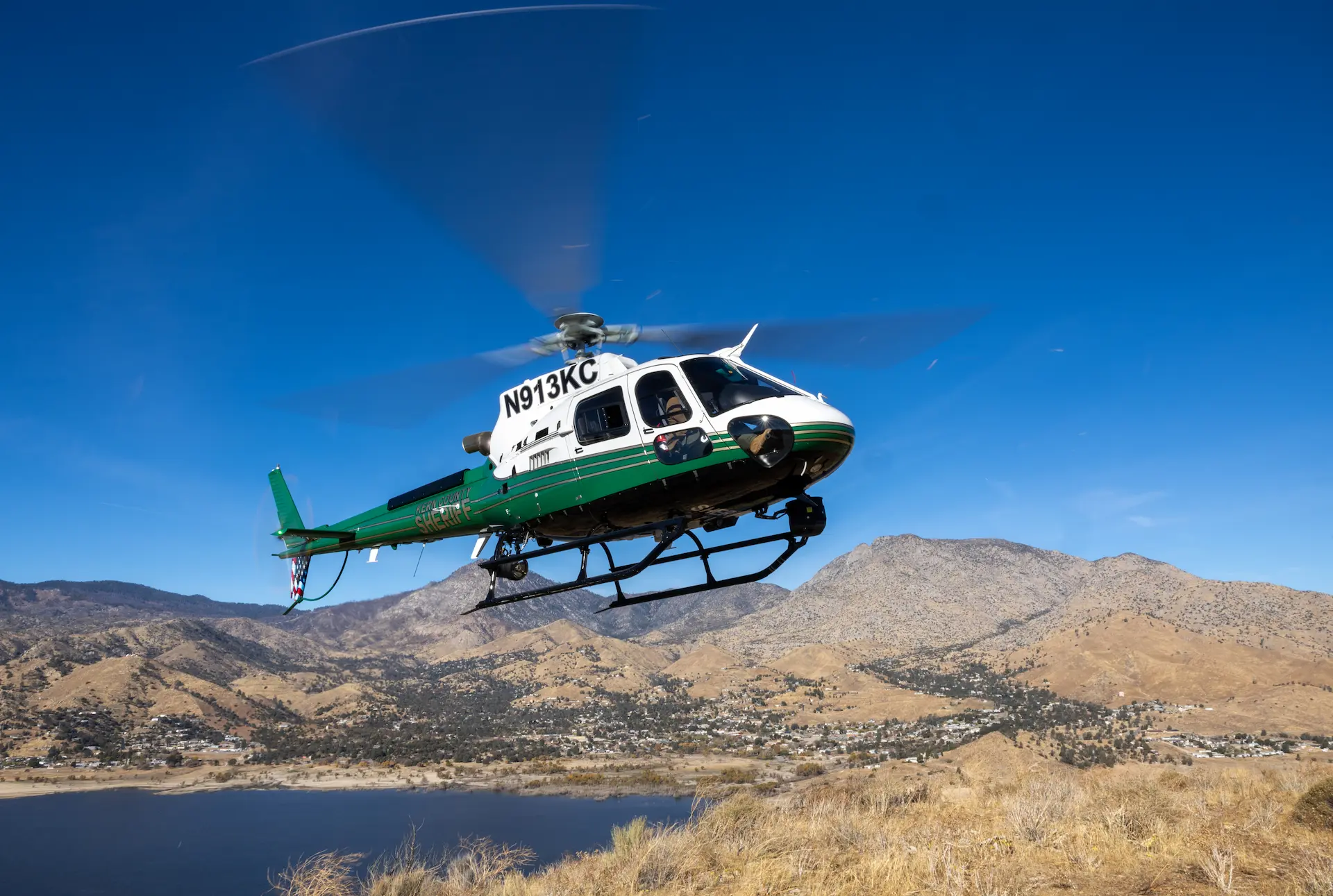
With regard to what the H125s bring to the unit, Caughron cited, “Just with the technology upgrades of the new FLIR and moving map system, our ability to find and follow in those types of missions has gone up dramatically. The 125s are a lot more comfortable and the air conditioning is great because we get periods of over 100 degrees in the summer, sometimes up to 112 or 114 degrees. They’re quite capable for our environment, elevations and conditions and I haven’t seen anything that the 125 isn’t easily capable of doing in our operations so far.” Riggs added, “We all love them. We’ve landed at 8,000ft to help a stranded motorist and could shut down with the FADEC and have no trouble with hot-starting.”
Patrols in the MD500s were routinely flown at 500ft AGL but the vastly improved definition and capability of the new 380HDc FLIR has made operation at much greater altitudes possible and Caughron stated that the unit has already carried out effective patrol and surveillance flights at 3,000 to 4,000ft. “You can actually get too low for this camera because you can’t zoom out enough to do what you have to do, so we’ve bumped up our altitudes a bit without any loss in ability, which also gives us a greater safety margin. I like to be low and from 700 to 1,000ft it works perfectly. The FLIR is fully integrated with the Shotover system and Macro-Blue screens so they work really well together. We’ve also deployed the downlinking to ground patrols so they can pull it up and see what we’re looking at,” he noted.
The new aircraft are identically equipped and Caughron stated that the unit has always made a point of equipping its aircraft in such a way to eliminate the increased risks associated with flying differently equipped or configured machines. “We’ve always done that, even to the extent of having our 58s flown from the left seat and their instrument panels stacked identically to our 500s,” he commented. The H125 cockpit is vastly different to the old 500 that has been retained as a trainer however, so the increased safety granted by commonality is just one notable justification for the acquisition of another H125 to replace the old machine. The unit carries out in-house aircrew training however, so the much lower operating costs of the 500 make it a much more affordable proposition as a training platform, particularly for primary training.
The AEM panel’s Bluetooth capability allows crew to take or establish conference calls in flight and to broadcast incoming transmissions over the aircraft PA system if desired, a great advantage in the law enforcement role. “A good example of that is when we were assisting with a foot pursuit in a huge orchard that required a K9 unit from another agency and that agency’s procedure demanded announcements before deploying the dog. The suspect was Spanish-speaking only and we were able to broadcast the announcement from a Spanish-speaking officer on the ground over our PA, otherwise the K9 couldn’t have been deployed,” related Caughron.

The unit is affiliated with the Californian OES (office of emergency services) so can be called out for assistance at emergencies anywhere in the state. Although not frequent, OES callouts do occur and Senior Deputy Tim Caughron advised that the unit had attended incidents as far north as Humboldt County, although such calls are usually for incidents in the closer counties. The SAR role was sidelined several years ago due to funding constraints but Caughron said that the unit is currently in the process of getting the SAR operation back up and running. The much greater performance, capability and equipment of the new H125s will make them an ideal platform for the rescue mission. Caughron commented, “At the moment we’re doing around 70 percent patrol work and right now we’re in a big training push to get new pilots online, which is taking up a lot of our time and focus.”
Although the unit operates on-call 24/7, it is not routinely staffed for those hours and Caughron explained that staffing was cut around five years ago and they are now in the process of rebuilding staff levels. The day shift works from 8:00 a.m. until 4:00 p.m. and does not routinely fly patrol flights but is available on call for any required missions and conducts most of the new pilots’ training. The night shift works Tuesday to Saturday from 6:00 p.m. until 2:00 a.m. and operates with two pilots instead of a pilot/TFO pairing. Alongside responding to callouts, the night shift usually flies two patrol flights, each of approximately two hours duration.
At its peak, the unit fielded four or five pilots and four TFOs but although there are now four pilots again, TFO numbers are down and increasing operational TFOs is the prime staffing goal. With the current mission set, another one or two TFOs are wanted but when the rescue role kicks in again, a further three or four total aircrew would be the minimum additional increase. “The nighttime is our bread and butter,” commented Caughron and Swanson advised that as staffing levels increased and training was largely completed, flight hours would increase and add support for the acquisition of another H125.
Because of its population density, the majority of calls for air support arise from within Bakersfield’s metropolitan area, a city of over 400,000 people. Calls do come in from all over the county however, and the Sheriff’s Office works on a mutual aid basis with police and enforcement agencies throughout the county. The workload is extremely variable though, and can be anything from two or three calls a night, up to twenty or more. The unit is selective in which calls it responds to, prioritizing those calls that are dynamic or mobile, incidents where they can set and monitor a perimeter, or where they can provide a definite aid, support or assistance to ground units. The aircraft do fly a lot and both H125s have already amassed more than 600hrs, in line with the unit’s budgeted total of 1,500hrs combined yearly flight time.
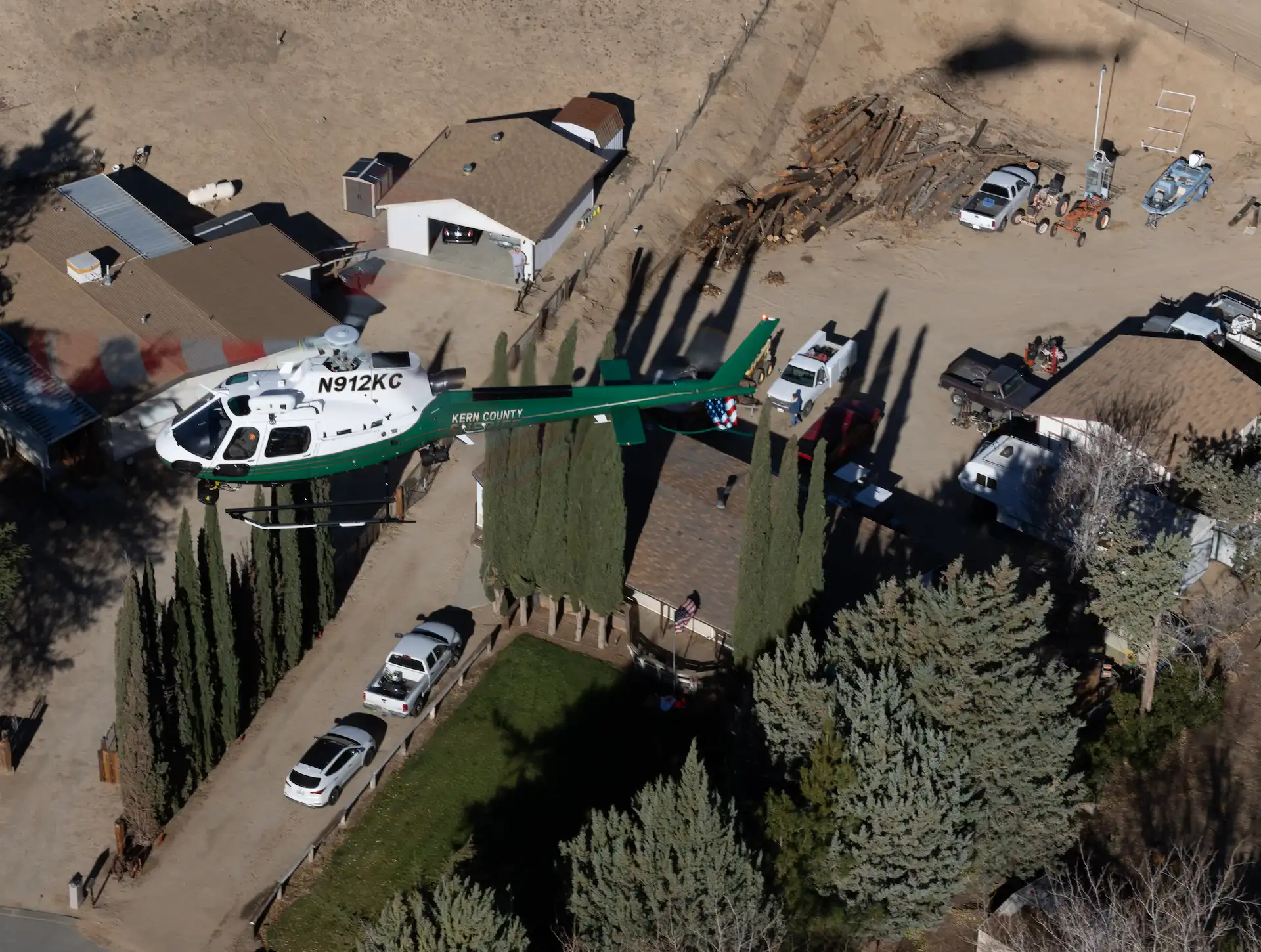
All pilots and TFOs are Kern Sheriff’s Office deputies and the unit expects them to serve at least two years on patrol before they can join the Air Unit as a TFO. “We support the guys on the ground and we can’t do that without that patrol experience ourselves. We’ll run them in that position for a year or so and make sure they are excelling at that job, then if there’s a pilot’s spot open or we see the need, we’ll start their flight training and we have the ability to do all of that in-house. Depending on resources and what we have going on, we’ll sometimes send them out to industry outside vendors for primary flight training but that costs a lot more than doing it ourselves,” Caughron advised. While there is no definite timeframe for recommencing recue operations, the role is currently in the planning phase so it should be reactivated in the relatively near future.
Right from the outset, the new aircraft have proved the benefit of their greater capability and Caughron Riggs illustrated that by relating how he and Riggs Deputy Brewster were enroute to a call and diverted to a stranded vehicle call in a remote mountainous area. They were able to locate the vehicle, conduct an out-landing, dig out the vehicle and send it on its way within around half an hour. Thanks to the H125, the incident was successfully completed before the ground units had even finished planning and left the station for their five or six-hour recovery mission. TFO Steven Brewster recalled a very early H125 flight on which he was familiarizing himself with the FLIR’s tracking capability and, locking onto a random target, he was able to let go of the controller while the FLIR maintained orientation and tracking. He related, “I looked across at the pilot to point out how good this was and he was sitting there with his hands off the controls as the aircraft was on autopilot. So, neither of us were hands-on but the aircraft and FLIR were both doing everything necessary to continue the mission.”
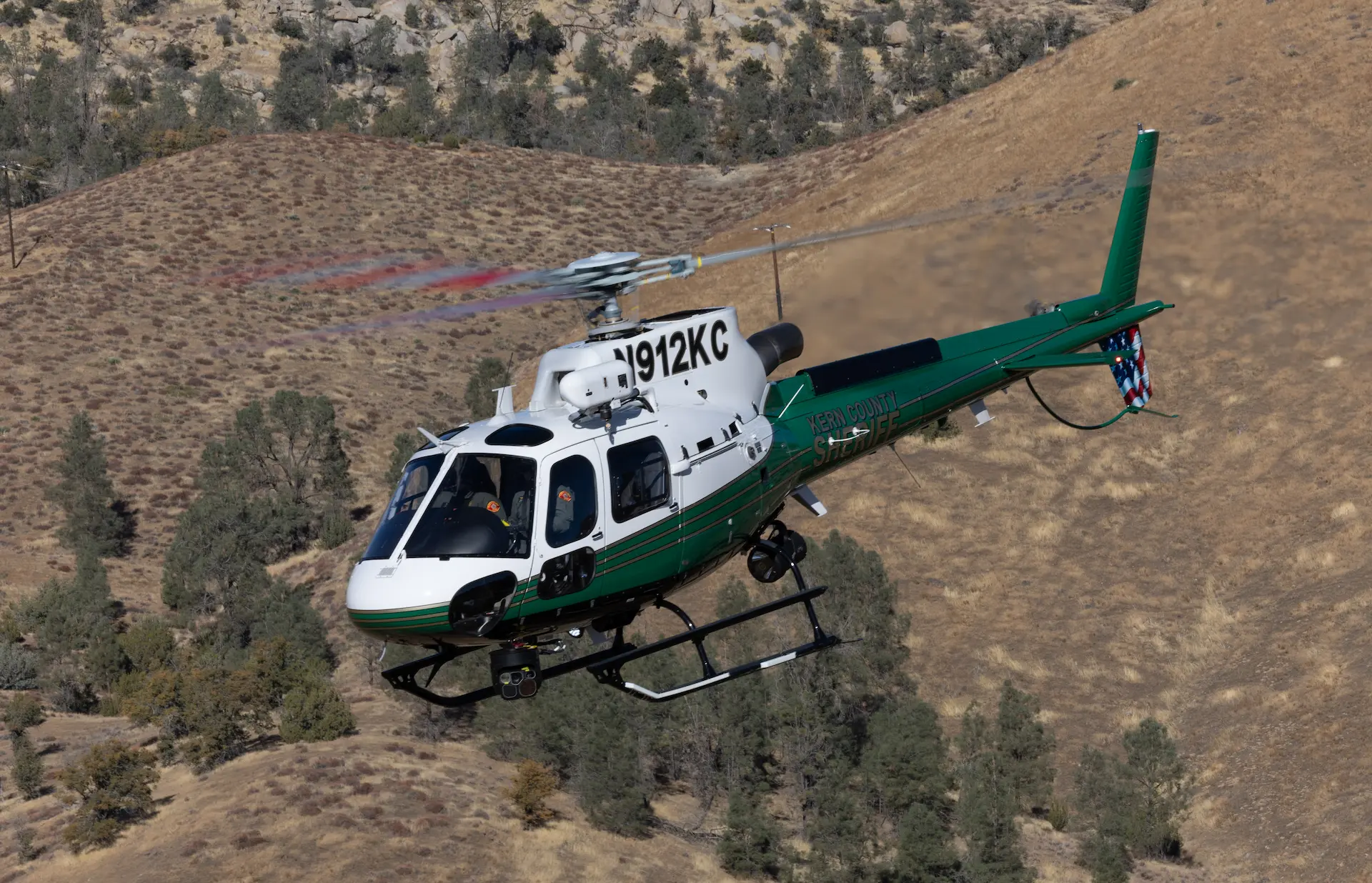
Caughron commented that he doesn’t see any additional aircraft equipment as necessary or even desirable for the unit’s mission needs and Riggs added that the only important change would be increasing the staffing level to enable a return to night shift for seven nights a week. Brewster observed that although the H125’s seats are much more comfortable than those in the 500s, they could still benefit from improvement. He related that because the Shotover PC computer-based system worked through the Macro-Blue screens, if it was possible to back out of it, a desktop computer would be available as an integral part of the cockpit avionics. With just one phone call to Shotover, an engineer had programmed and established such a facility, so now the H125s have full in-built PC computer capability on their Macro-Blues.
Swanson described the process of dealing with Airbus as smooth overall. Only one Airbus employee created any problems and when he was replaced, everything went smoothly. He advised, “In the short term we’d like to get the SAR program active as soon as we can, but that is dependent on getting the necessary personnel into the unit and trained up.” He added that after several years of SAR program hiatus, almost all of the unit’s rescue equipment will require replacement and existing personnel will need retraining in the role. He said that plans for future growth are an additional H125, followed by investment in some fixed-wing assets. “Our plan is to go for another 125, but it’s the county finances that are going to dictate that. I do believe though, that within the next couple of years that is going to happen.”
 HOME
HOME


